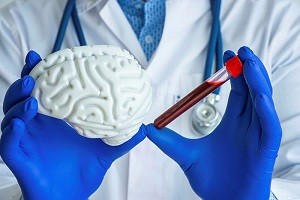 BMC Neurology is now welcoming submissions to a new Collection on biomarkers of neurological diseases and their potential in understanding, diagnosing, and managing various neurological conditions that impact millions of lives worldwide.
BMC Neurology is now welcoming submissions to a new Collection on biomarkers of neurological diseases and their potential in understanding, diagnosing, and managing various neurological conditions that impact millions of lives worldwide.
Neurological diseases, such as stroke, Parkinson’s disease, and multiple sclerosis pose significant challenges to individuals, their families, and healthcare systems. These conditions remain a significant public health concern, and as such, effective diagnostic tools, prognostic indicators, and personalized treatment strategies are in high demand. Measurable molecules and substances known as biomarkers hold immense promise in fulfilling these needs.
In this Collection, we invite submissions of cutting-edge original research offering novel perspectives on the identification, validation, and utilization of biomarkers in neurological diseases. We seek contributions that span a broad spectrum of disciplines, including genomics, proteomics, epidemiology, metabolomics, and transcriptomics. By embracing the synergistic power of these fields, we can harness the potential of biomarkers and grow closer to implementing them in clinical contexts.
Topics of interest to this Collection include, but are not limited to:
• Novel biomarkers for early detection and diagnosis of stroke, Parkinson’s disease, multiple sclerosis, or other neurological diseases
• Advancements in MRI, PET, or CT-based imaging biomarkers for neurologic disease detection and monitoring
• Using inflammatory markers as predictors of neurological disease progression and severity
• Oxidative stress as an indicator of neurodegeneration and potential targets for treatment response
• Using neurofilament proteins, tau protein, alpha-synuclein, and myelin-specific markers to diagnose the neuronal damage, degeneration, and myelin integrity associated with various neurological diseases
• The role of non-invasive biomarkers in neurology, such as blood-based or cerebrospinal fluid (CSF) biomarkers
• Challenges and opportunities in translating biomarker research to clinical practice
Image credit: Shidlovski / Getty Images / iStock
BMC Neurology announced a new Collection focused on biomarkers of neurological diseases.
This collection supports and amplifies research related to SDG 3: Good Health & Well-Being.
